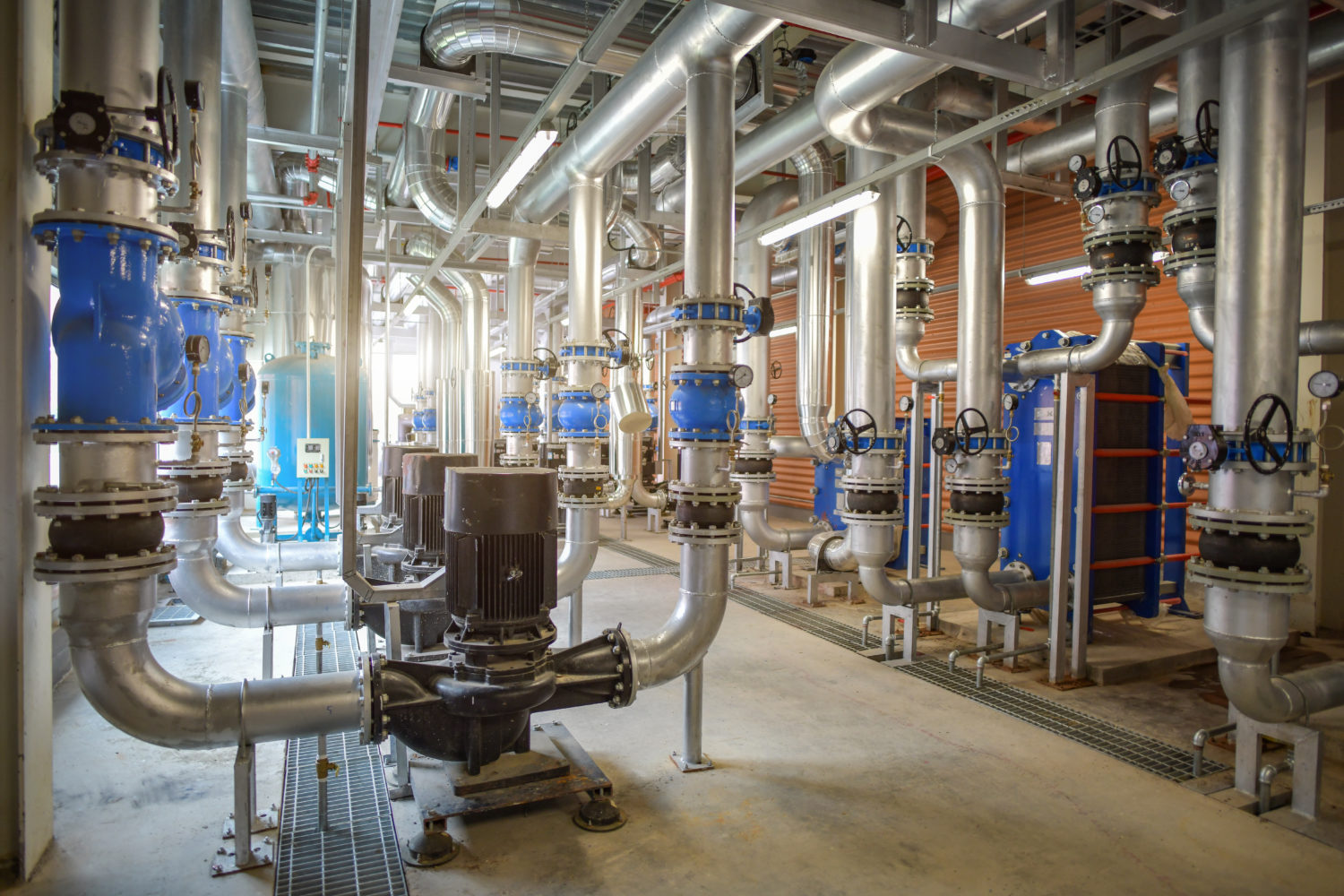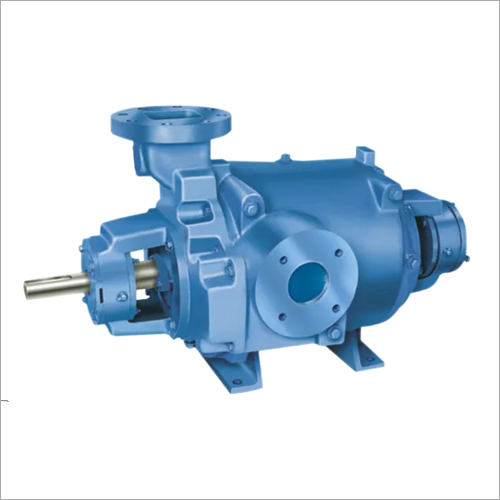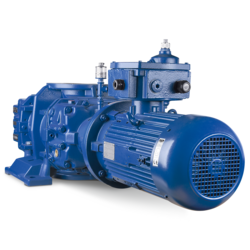产品说明
Small Laboratory Desktop Mini Circulating Water Vacuum Pump
产品说明
The circulating water vacuum pump is a laboratory vacuum generator that uses a water jet to generate a vacuum. This machine is used to provide vacuum conditions for the process of evaporation, distillation, crystallization, drying, sublimation, filtration, degassing, decompression, and so on, particularly be suitable for labs and small-scale tests in industries such as universities and colleges, scientific research institutes, chemical industry, pharmacy, biochemistry, foodstuff, pesticide, agricultural engineering, biological engineering.
产品参数
| 模型 | SHZ-D | SHZ-D four-meter, four tap |
|||||||||||||||||||||||
| The machine Performance | Power(W) | 180 | 370 | ||||||||||||||||||||||
| Voltage(V/Hz) | 220/50 | ||||||||||||||||||||||||
| Flow(L/min) | 60 | ||||||||||||||||||||||||
| Lift(m) | 8 | ||||||||||||||||||||||||
| Body material | Anti-corrosion/1Cr18 | Anti-corrosion | |||||||||||||||||||||||
| The machine performance | Max. pressure (M Pa) | 0.098 | |||||||||||||||||||||||
| Sucking rate for single tap(L/min) | 10 | ||||||||||||||||||||||||
| Quantity of tap (Pcs) | 2 | 4 | |||||||||||||||||||||||
| Tank capacity(L) | 15 | ||||||||||||||||||||||||
| Dimension(mm) | 4362 Main Markets: Central America, Mid East, Oceania, Africa, South America
Packaging & Shipping
Packaging:
常见问题 1. What’s the minimum order quantity?
2. What kind of payment terms do you accept? 3. How will you deliver these goods? 4. How will we package glass equipment be? 5. Can you accept OEM terms? 6. How to choose suitable equipment?
真空泵可用于汽车行业吗?是的,真空泵广泛应用于汽车行业的各种应用中。下面是详细说明: 汽车行业的一些关键功能和系统都依赖于真空泵。真空泵在增强性能、提高燃油效率和实现各种汽车系统的运行方面发挥着至关重要的作用。以下是真空泵在汽车行业的一些主要应用: 1.制动系统:真空泵通常用于真空辅助制动系统,也称为动力制动。这些系统利用真空压力放大驾驶员施加在制动踏板上的力,使制动更有效、反应更灵敏。真空泵有助于产生助力制动所需的真空,确保制动性能可靠稳定。 2.排放控制系统:真空泵是车辆排放控制系统的组成部分。它们协助废气再循环 (EGR) 阀和蒸发排放控制 (EVAP) 系统等部件的运行。真空泵有助于为这些系统的正常运行创造必要的真空条件,减少有害气体的排放,提高整体环保性能。 3.暖通空调系统:车辆的供暖、通风和空调(HVAC)系统通常使用真空泵来实现各种功能。真空泵可帮助控制真空执行器,从而调节暖通空调系统的方向、温度和气流。它们可确保车辆内部气候控制系统的高效运行和精确控制。 4.涡轮增压器和增压器系统:在以性能为导向的车辆中,涡轮增压器和增压器系统用于提高发动机功率和效率。真空泵在这些系统中的作用是为废气门、排气阀和其他控制机构提供真空压力。这些部件有助于调节增压压力,确保强制感应系统达到最佳性能。 5.燃油输送系统:真空泵用于某些类型的燃油输送系统,如机械燃油泵。这些泵利用真空压力从燃油箱抽取燃油并输送到发动机。虽然机械燃油泵在现代汽车中使用较少,但真空泵在某些特殊应用中仍有使用。 6.发动机管理系统:真空泵用于发动机管理系统的各种功能。它们协助操作真空执行器、真空贮液器和真空传感器等部件。这些部件在发动机性能、排放控制和整个系统功能方面发挥着作用。 7.流体控制系统:真空泵用于汽车内的流体控制系统,如动力转向系统。真空辅助动力转向系统利用真空压力来协助驾驶员转向,从而减少所需的力度。真空泵为动力转向助力提供必要的真空,从而提高操纵性和驾驶舒适性。 8.诊断和测试设备:汽车诊断和测试设备中也使用真空泵。这些泵可产生测试和诊断各种汽车系统(如进气歧管泄漏、制动系统完整性和真空操作部件)所需的真空条件。 值得注意的是,根据具体的汽车应用,可能会使用不同类型的真空泵。汽车行业常用的真空泵技术包括隔膜泵、旋片泵和电动真空泵。 总之,真空泵在汽车工业中应用广泛,从制动系统和排放控制到 HVAC 系统和发动机管理,无所不包。它们有助于提高安全性、燃油效率、环保性能和车辆的整体功能。
How Do Vacuum Pumps Affect the Performance of Vacuum Chambers?When it comes to the performance of vacuum chambers, vacuum pumps play a critical role. Here’s a detailed explanation: Vacuum chambers are enclosed spaces designed to create and maintain a low-pressure environment. They are used in various industries and scientific applications, such as manufacturing, research, and material processing. Vacuum pumps are used to evacuate air and other gases from the chamber, creating a vacuum or low-pressure condition. The performance of vacuum chambers is directly influenced by the characteristics and operation of the vacuum pumps used. Here are some key ways in which vacuum pumps affect the performance of vacuum chambers: 1. Achieving and Maintaining Vacuum Levels: The primary function of vacuum pumps is to create and maintain the desired vacuum level within the chamber. Vacuum pumps remove air and other gases, reducing the pressure inside the chamber. The efficiency and capacity of the vacuum pump determine how quickly the desired vacuum level is achieved and how well it is maintained. High-performance vacuum pumps can rapidly evacuate the chamber and maintain the desired vacuum level even when there are gas leaks or continuous gas production within the chamber. 2. Pumping Speed: The pumping speed of a vacuum pump refers to the volume of gas it can remove from the chamber per unit of time. The pumping speed affects the rate at which the chamber can be evacuated and the time required to achieve the desired vacuum level. A higher pumping speed allows for faster evacuation and shorter cycle times, improving the overall efficiency of the vacuum chamber. 3. Ultimate Vacuum Level: The ultimate vacuum level is the lowest pressure that can be achieved in the chamber. It depends on the design and performance of the vacuum pump. Higher-quality vacuum pumps can achieve lower ultimate vacuum levels, which are important for applications requiring higher levels of vacuum or for processes that are sensitive to residual gases. 4. Leak Detection and Gas Removal: Vacuum pumps can also assist in leak detection and gas removal within the chamber. By continuously evacuating the chamber, any leaks or gas ingress can be identified and addressed promptly. This ensures that the chamber maintains the desired vacuum level and minimizes the presence of contaminants or unwanted gases. 5. Contamination Control: Some vacuum pumps, such as oil-sealed pumps, use lubricating fluids that can introduce contaminants into the chamber. These contaminants may be undesirable for certain applications, such as semiconductor manufacturing or research. Therefore, the choice of vacuum pump and its potential for introducing contaminants should be considered to maintain the required cleanliness and purity of the vacuum chamber. 6. Noise and Vibrations: Vacuum pumps can generate noise and vibrations during operation, which can impact the performance and usability of the vacuum chamber. Excessive noise or vibrations can interfere with delicate experiments, affect the accuracy of measurements, or cause mechanical stress on the chamber components. Selecting vacuum pumps with low noise and vibration levels is important for maintaining optimal chamber performance. It’s important to note that the specific requirements and performance factors of a vacuum chamber can vary depending on the application. Different types of vacuum pumps, such as rotary vane pumps, dry pumps, or turbomolecular pumps, offer varying capabilities and features that cater to specific needs. The choice of vacuum pump should consider factors such as the desired vacuum level, pumping speed, ultimate vacuum, contamination control, noise and vibration levels, and compatibility with the chamber materials and gases used. In summary, vacuum pumps have a significant impact on the performance of vacuum chambers. They enable the creation and maintenance of the desired vacuum level, affect the pumping speed and ultimate vacuum achieved, assist in leak detection and gas removal, and influence contamination control. Careful consideration of the vacuum pump selection ensures optimal chamber performance for various applications.
Can Vacuum Pumps Be Used in Food Processing?Yes, vacuum pumps are widely used in food processing for various applications. Here’s a detailed explanation: Vacuum pumps play a crucial role in the food processing industry by enabling the creation and maintenance of vacuum or low-pressure environments. They offer several benefits in terms of food preservation, packaging, and processing. Here are some common applications of vacuum pumps in food processing: 1. Vacuum Packaging: Vacuum pumps are extensively used in vacuum packaging processes. Vacuum packaging involves removing air from the packaging container to create a vacuum-sealed environment. This process helps extend the shelf life of food products by inhibiting the growth of spoilage-causing microorganisms and reducing oxidation. Vacuum pumps are used to evacuate the air from the packaging, ensuring a tight seal and maintaining the quality and freshness of the food. 2. Freeze Drying: Vacuum pumps are essential in freeze drying or lyophilization processes used in food processing. Freeze drying involves removing moisture from food products while they are frozen, preserving their texture, flavor, and nutritional content. Vacuum pumps create a low-pressure environment that allows frozen water to directly sublimate from solid to vapor, resulting in the removal of moisture from the food without causing damage or loss of quality. 3. Vacuum Cooling: Vacuum pumps are utilized in vacuum cooling processes for rapid and efficient cooling of food products. Vacuum cooling involves placing the food in a vacuum chamber and reducing the pressure. This lowers the boiling point of water, facilitating the rapid evaporation of moisture and heat from the food, thereby cooling it quickly. Vacuum cooling helps maintain the freshness, texture, and quality of delicate food items such as fruits, vegetables, and bakery products. 4. Vacuum Concentration: Vacuum pumps are employed in vacuum concentration processes in the food industry. Vacuum concentration involves removing excess moisture from liquid food products to increase their solids content. By creating a vacuum, the boiling point of the liquid is reduced, allowing for gentle evaporation of water while preserving the desired flavors, nutrients, and viscosity of the product. Vacuum concentration is commonly used in the production of juices, sauces, and concentrates. 5. Vacuum Mixing and Deaeration: Vacuum pumps are used in mixing and deaeration processes in food processing. In the production of certain food products such as chocolates, confectioneries, and sauces, vacuum mixing is employed to remove air bubbles, achieve homogeneity, and improve product texture. Vacuum pumps aid in the removal of entrapped air and gases, resulting in smooth and uniform food products. 6. Vacuum Filtration: Vacuum pumps are utilized in food processing for vacuum filtration applications. Vacuum filtration involves separating solids from liquids or gases using a filter medium. Vacuum pumps create suction that draws the liquid or gas through the filter, leaving behind the solid particles. Vacuum filtration is commonly used in processes such as clarifying liquids, removing impurities, and separating solids from liquids in the production of beverages, oils, and dairy products. 7. Marinating and Brining: Vacuum pumps are employed in marinating and brining processes in the food industry. By applying a vacuum to the marinating or brining container, the pressure is reduced, allowing the marinade or brine to penetrate the food more efficiently. Vacuum marinating and brining help enhance flavor absorption, reduce marinating time, and improve the overall taste and texture of the food. 8. Controlled Atmosphere Packaging: Vacuum pumps are used in controlled atmosphere packaging (CAP) systems in the food industry. CAP involves modifying the gas composition within food packaging to extend the shelf life and maintain the quality of perishable products. Vacuum pumps aid in the removal of oxygen or other unwanted gases from the package, allowing the introduction of a desired gas mixture that preserves the food’s freshness and inhibits microbial growth. These are just a few examples of how vacuum pumps are used in food processing. The ability to create and control vacuum or low-pressure environments is a valuable asset in preserving food quality, enhancing shelf life, and facilitating various processing techniques in the food industry.
标签循环真空泵 | laboratory vacuum pump | mini vacuum pump | 真空泵 | 真空泵 | small vacuum pump | vacuum mini pump | 真空泵 | 中国真空泵 | vacuum pump mini | 真空泵水 | 真空水泵 | water circulating vacuum pump | water vacuum pump
| ||||||||||||||||||||||||




